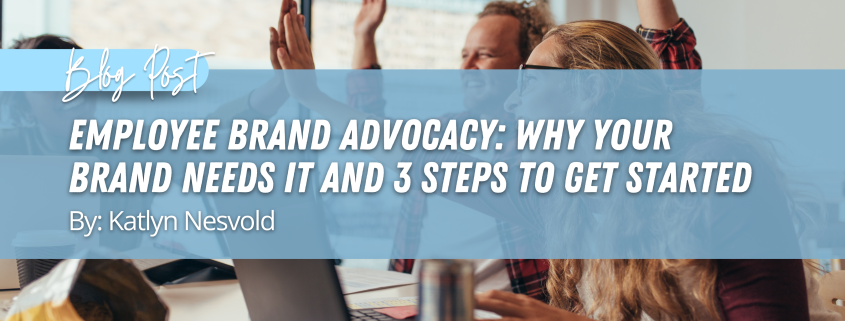
by Marcia Rhodes | Mar 7, 2023 | Blog
Many PR and marketing professionals hold the mistaken belief that analyst briefings are pointless unless their company has a paid subscription with the analyst firm. Analyst relations are frequently one of the first items marketers seek to remove from our PR proposals.
We firmly believe it is worthwhile for your organization to conduct an “earned” briefing, similar to the earned opportunities your PR team is actively seeking from the media. This is true even if your organization does not have a paid relationship with an analyst firm. Analysts are typically flexible when it comes to scheduling calls or even in-person briefings, provided the privilege of an earned briefing is not misused. Nonetheless, make sure you have something significant to say, and that you are ready for challenging inquiries regarding the strategy, target markets, clients, and even the financials of your firm.
Executives looking to make significant buying decisions about healthcare technology solutions often rely on analyst recommendations. Several companies rely on the rankings of a well-known analyst firm and send their RFPs only to the top 5 vendors on those lists. It is critically important that your organization is included among vendor recommendations when your prospects check in with analysts.
Yes, you’ll probably have to take a sales call along with the briefing. But the intrinsic, long-lasting value of getting in front of key analysts who decide to make the lineup for recommendations makes that 30 extra minutes listening to a sales spiel about their services and events well-worth the effort. Plus, the media often turns to analysts for expert insights. While analysts usually don’t reference specific vendors in their quotes, you do want them to be aware of your positioning so that when they are quoted in the media, your organization’s vision is helping to shape the thinking behind their comments.
Which are the key analyst firms you should consider targeting for “earned” briefings? In general, the most well-known firms are Gartner, Advisory Board, IDC, Forrester, Frost & Sullivan, KLAS, Chilmark, S&P Global and Signify Research. There are analysts, such as Mike Feibus of FeibusTech, who also write articles for media outlets.
Regular briefings with the pertinent analysts at these firms should be a part of your analyst relations strategy. Several of them regularly attend health tech conferences such as HIMSS, ViVE and HLTH. Your PR team should be making sure you connect with them in person during the show. The meet-and-greet at these shows should lead to a full briefing via Zoom a few weeks after the show.
If there is no opportunity to meet in person, visit the analyst firm’s website to view a list of the reports they intend to release throughout the course of the year. Create a briefing schedule based on these reports and then complete an online form requesting a briefing with the pertinent analyst.
So, you got the briefing booked. Now what? Be sure to read “Analyst Briefings Best Practices” for recommendations to help you prepare, including who should attend the meeting, what slide content to include and how many slides you need, practicing your presentation, and more.

by Brandon Glenn | Feb 22, 2023 | Blog
We’ve all been there – sitting in a meeting that could have easily ended a half-hour ago – but for some reason, the meeting just crawls on and on.
One person may go off on a tangent that may be mildly interesting but has no relevance to the meeting’s objectives. Another person may ask a question that they would have already known the answer to if they were paying attention five minutes earlier. Yet another may deliver a 5- or 10-minute monologue that only has relevance to one other team member at the meeting and could have more easily and efficiently been handled via one well-written email.
Regardless of the reason, business meetings too often turn out to be a waste of time and resources. That was a major conclusion of the book “The Surprising Science of Meetings,” written by Steven G. Rogelberg, a professor at the University of North Carolina – Charlotte and perhaps the world’s “leading expert” on business meetings.
“Poorly conducted meetings clearly hurt leaders, teams, departments, and organizations,” Rogelberg writes. However, that is not to say that meetings should be eliminated. In some cases (when performed properly), meetings are a necessary means of exchanging ideas, arriving at decisions, and keeping team members informed.
Most companies view bad and unnecessary meetings as an inevitable cost of doing business, but it doesn’t have to be that way. It’s simply a question of making meetings more productive and valuable to all participants – and a big part of that is choosing the right length of time.
Meetings in Corporate America: Too many and too long
On an average day in the U.S., 55 million meetings occur, according to Rogelberg’s research. That represents five-fold growth over the 11 million daily meetings that happened in 1976, according to a Harvard Business Review estimate.
Today, on average, non-managers attend eight meetings per week, while the number for managers climbs to 12. Chief executives may spend a whopping 60% of their time in meetings, according to Rogelberg.
Though most of us may prefer not to think about it, there is a time and cost associated with every meeting. An estimate by Xerox once found that meetings among its 24,000-employee development team cost the company over $100 million a year. Separately, an estimate from Lucid Meetings found that the U.S. spends $1.4 trillion per year on meetings, or roughly 8% of the nation’s annual gross domestic product.
Despite all this expense and investment, meetings often fail to accomplish much of anything productive – just ask the attendees. A 2014 survey of nearly 2,100 U.S. adults found that nearly half of respondents would rather do anything unpleasant, such as standing in line at the DMV or watching paint dry, than attend a status meeting. Further, more than one-third of respondents said status meetings are “a waste of time.”
Separately, a 2005 Microsoft survey of 40,000 global workers found that 69% said their meetings were unproductive.
30 minutes is the magic number
It’s all enough to make one ponder: If so many of us seem to agree that corporate America spends too much time in meetings that often fail to accomplish their objectives, then why don’t we cut down on the amount of time we spend in meetings? Judging from a couple of Google searches, I’m not the only one.
Luckily, there’s a simple way to reduce the amount of time we all spend in meetings: Never allow them to exceed 30 minutes.
Plenty of other meeting-weary attendees have come to the same conclusion:
- “Scheduling meetings for more than an hour is non-productive,” writes Time Management Ninja. “You lose people’s interest, energy, and attention. Even worse, meetings will always expand to fill the allowed time.”
- “I maintain if individual prep work is done beforehand by each participant and the meeting starts on time and stays on focus, everything included in a reasonable hour-long agenda could well be covered in 30 minutes with plenty of time for meaningful, yet not excessive banter,” says Nate Towne on LinkedIn.
- “I believe that all meetings should be 30 minutes or less,” writes Tessa Palmer on Medium. “And not a second longer. If you can’t say what you’re going to say in half-an-hour, then you’re doing it all wrong.”
While doing away with hour-long meetings might seem like a dramatic shift to some, I believe it is more doable than many of us assume. Instead of hour-long meetings, try 15 – 20 minute huddles, SparkHire suggests. Come prepared with an agenda, ask attendees to brainstorm ideas by themselves ahead of time (a technique known as “brainwriting” that I’ve previously advocated), limit the number of participants to only those absolutely necessary, and start with what’s important.
So next time you’re tempted to send out a notice for a 60-minute meeting, pause, take a deep breath, and think about what you could do beforehand to cut that time in half. Your teammates will undoubtedly appreciate it.

by Marcia Rhodes | Feb 1, 2023 | Blog
Many of our clients who accept an invitation to appear as a guest on a podcast are shocked when they learn that the interview included a video recording that was uploaded to YouTube. Keep in mind that even if the interview is in podcast form, you should always be ready for a possible video interview. No problem as you frequently use Zoom for calls. Right?
Zoom is undoubtedly the most user-friendly video platform in the world. It enables remote interviews without requiring a complex home studio setup. But there’s a catch: you’re now in charge of your own lighting, audio, and makeup.
Do not fret. There is no need to put in hours attempting to simulate an interview created by a professional company. Get the following fundamentals down, and you’ll exude assurance, polish and warmth.
#1: Learn about the “Touch up my appearance” tool in Zoom. Your video display receives an instant soft focus, giving it a more polished image.
#2: Steer clear of virtual backgrounds. They’re enjoyable with friends and coworkers, but not suitable for interviews with the press. The ideal setting is a neat home office. However, if you don’t have a specific working area, pay attention to your surroundings. A messy bed, an open bathroom door, or a background mirror might be embarrassing. Additionally, look for a location where you can keep out kids, other people, and your pets to prevent this scenario.
#3: Do not position yourself too near the camera. This gives the potential viewer the unsettling impression that a huge face is staring back at them through their computer screen. Put yourself in a position where your head, shoulders and chest are visible to the camera.
#4: Dress in professional business attire. On video, solid blue clothing projects well; however white could make you appear washed out. Avoid wearing jewelry with loud or dangling charms or busy patterns that will draw attention away from what you are trying to express.
#5: Powder your nose and forehead to “de-shine.” Any shine gets exaggerated on video and can be distracting. If you don’t happen to have a compact of powder on hand, crank up your AC ahead of the interview.
#6: Keep looking the audience in the eye. Direct your attention to the camera on the laptop or computer screen. To make sure that your eyes are pulled to the camera, experts advise adding an arrow.
#7: It’s a good idea to write down three important points that you want to remember and set them nearby, out of sight of the camera. It is preferable to glance down at notes rather than up at the ceiling when trying to remember anything. In fact, looking up during an interview makes candidates seem dishonest. To use as “cue cards,” you may also put up your talking points against the side of your camera.
#8: Instead of using your smartphone, use a laptop or desktop PC. Your interviewer will be able to capture you in landscape mode this way.
#9: Always rehearse with a coworker to ensure that all of the above have been taken into account. Your confidence and memory of the information you wish to convey will both be greatly improved by even one practice session.
If you would like coaching on what to say and how to say it during interviews, consider taking some “Media Training.” Everyone gains significantly from it, regardless of how frequently they have been the subject of media interviews. To learn more about our media training programs, contact Amendola at info@acmarketingpr.com.
Best of luck with your next video interview!

by Katlyn Nesvold | Jan 11, 2023 | Blog
Brand advocacy is not a new idea, but many brands are still lacking the momentum behind it. As we move into 2023, brand advocacy should be a vital part of your marketing strategy. In fact, according to Edelman Trust Barometer, employee advocacy-related leads converted seven times more often than other types of leads.
At Amendola, we recently had an employee contest to incentive staff to invite friends to “follow” our company page on LinkedIn. This simple, short, three-week campaign proved to be effective and resulted in a 33% increase to our LinkedIn engagements and a net follower growth of 850%. If this alone isn’t enough reason to jump on the employee advocacy band wagon, here are a few more stats that might convince you:
Many of us have heard the Richard Branson phrase, “Take care of your employees, they will take care of your clients.” When you have employees who are passionate about the company they work for, it’s obvious to outsiders, especially when the employees are active on social media. Organizations in that position have a large, targeted audience that could and should be leveraged.
Your social media and PR strategy should be intertwined, as should your approach to brand advocacy. As you are planning for 2023, find ways to leverage your employees’ networks as part of your marketing efforts. LinkedIn is uniquely positioned for B2B, has a large reach and is a great place to post and find thought leadership. Here are three easy steps to jump-start your efforts, get your employees set up and engaged (or re-engaged) on LinkedIn, and build or amplify your brand.
1: Encourage your employees do a LinkedIn makeover: Provide them with a correctly sized company branded cover photo that they can add to their profile (and make sure to provide updated images if you have a campaign you’re promoting.) Advise them to update their current job to reflect where they work, if they haven’t already. Suggest that they share details about what they do in their current position in the about section – or go one step further and provide them a few options for suggested copy to help get the creative juices flowing.
2: Kick off your advocacy campaign with a contest: Implementing a simple contest, such as sharing company posts, is more likely to get participation than a complicated multi-step process. As employees share posts with their own networks, the company’s posts will become visible in their newsfeeds and attract new views – and it’s likely than many of these new viewers are your target audience. To drive success, don’t forget to offer your employees a worthwhile prize!
3: Make it part of your marketing workflow: Share media hits, important news, and brand posts with staff with a simple link to the LinkedIn post. Alternatively, provide them with recommended copy they can post if they reshare a post. Take it one step further and ask them to “comment” on posts to move them up in the news feed. For any of your company thought leaders with larger, more targeted audiences, this should be a standard workflow any time you have a media hit or a post you’d like amplified.
Encouraging your thought leaders to be active on social can lead to an additional benefit: potential media interviews. Often reporters will search social media to identify thought leaders for interviews. Having an active and updated social media presence provides another layer of credibility for your thought leaders and brand.
The benefits of employee brand advocacy go far beyond boosting your marketing efforts. If you’ve tried to recruit in the last few years, you know just how valuable it is to retain talent. Having engaged employees is known to boost company culture, which leads to happier and more productive employees, and increased talent retention.
Have you started an employee brand advocacy program? If not, make it part of your 2023 plan and watch your social media channels grow.

by Grant Evans | Dec 22, 2022 | Blog
“The first draft is the best, and it’s all downhill from there.”
These snarky yet valid words came from a longtime friend, colleague, and mentor. They semi-jokingly referred to much of the writing we produced as the content marketing arm of a Fortune 500 healthcare IT provider. But it was most often muttered when talking about news releases.
Working in such a large, diverse organization, we never lacked fodder for any form of content, and news releases were among the most requested form of PR. As former trade journalists with decades of agency and in-house marketing experience, we’d both been the recipients and issuers of thousands of releases and had instincts––and opinions––about what made them good or bad.
Although we applied these principles with varying degrees of success, a few core tenets proved universal. So here are a few considerations.
Should This Be a Release?
Note that I say a news release, and not a press release. Whatever you are announcing should have news value, and its primary target should be the media––whether they report for trade, consumer, financial, or other outlets. But plenty of folks default to a news release when they should pursue other communications.
If the goal is lead generation, then a news release is not your best tool. If your target audience is prospects, customers, or potential partners, then communicate directly with them. Speak their language. Be persuasive. But don’t issue a news release. There are far better direct channels to use. Be creative and go direct.
Other times, a news release is a good choice, provides a solid proof point, but is not a news generator. Most partnership releases will not be covered, but you still need an asset to point to that documents the relationship, kind of like an old-school wedding announcement. Public companies have disclosure requirements and are obligated to issue such releases (among many others). Pending trade show participation or speaking engagements are other types that simply won’t get ink. But your partners, prospects, and customers may see them. Similarly, ‘point’ upgrades to existing solutions won’t garner reportage, but you’d be remiss in not announcing them.
Once you’ve settled on a news release as the vehicle, determine what level of distribution and muscle to put behind it. Should it be an asset posted to your website newsroom only? Issued on the wire? Issued on the wire with multimedia attachments and pitched directly to target media?
The Draft
When writing a release, avoid the formulaic approach employed by most companies. Leading with, “ACME Widgets, the acclaimed global leader in innovative platforms to end the scourge of hunger and promote world peace, today announced blah blah blah …” will immediately lose readers. Keep the company descriptor minimal and factual, because anyone who doesn’t know who you are can read the boilerplate at the end.
Avoid ‘inside baseball’ jargon. Succinctly describe what you are announcing, who it impacts, and what it means to them. No need to dumb it down to the point of ‘explaining it to your grandmother in Peoria.’ Just be mindful of the audience and their level of understanding. Provide context––frame up the problem that your solution addresses, and how you help solve it. Omit needless words.
Ask journalists about quotes in releases, and many will say they don’t read them because they’re typically superfluous, self-aggrandizing garbage. They needlessly inflate word counts and are rarely reprinted. But this doesn’t need to be the case. Ditch the back-slapping adjectives and “We’re proud/thrilled/honored to…” language and opt for editorial comments that add color and emphasize your value proposition. Statistics that underscore problem statements are gold. Be bold and declarative without bragging. And avoid multiple quotes when possible. Remember, you’re paying by the word.
Ride the Stallion, Not the Camel
It’s been said that a camel is a horse designed by a committee. Well, release reviews are not only a source of delays that can torpedo the timeliness of your news, but can morph a fine Arabian stallion into a flea-infested camel. Establishing ‘need-to-see’ approval chains for each release helps, as does defining each reviewer’s role. For example, marketing reviews for adherence to corporate messaging, the product lead makes sure that features are correct, the legal reviewer checks compliance, and so on. If you have 15 individuals reviewing a single release, rethink your approach.
Implement a linear, serial review process––one reviewer at a time, with edits and comments returned to the document owner and resolved before moving to the next reviewer. Start with the most basic review, such as product, then on through the food chain and finish with legal. This way, you avoid “forked” reviews with conflicting edits that are difficult to resolve and only prolong the process.
Distribution: How Much is a Cab Ride?
When it comes to distribution, you get what you pay for, and the many ‘free’ services will get you about as far as a free cab ride. You’re nearly always better off with a trusted leader like PR Newswire (Cision), which provides tailored distribution to target audiences and a host of add-on features and feeds to refine and extend your reach. But that’s a topic that can devour another post.
One glaring distribution mistake that occurs far too often is when a company painstakingly crafts a release, then spends untold agency and in-house hours on reviews and revisions, only to squabble and balk at paying an extra $600 on features that will exponentially increase engagement.
One time-tested way to boost engagement is to bundle at least two pieces of related content with each release. These can be photos, data sheets, case studies, videos, archived webinars, podcasts––you name it. It costs a few more bucks but is very effective. Video has been proven time and again to turbo-charge engagement. The bottom line is to not rely solely on the release to tell your story. Link to related reports, eBooks, white papers … even cartoons.
And if you’re still reluctant to spend on bundled content, a link to a related content repository is another way to add more to the story without attaching individual items.
The justification, development, and distribution of news releases is a topic we could discuss for days. But keeping a few of these considerations in mind can help ensure that your next news release hits the mark rather than the proverbial circular bin.

by Jodi Amendola | Nov 30, 2022 | Blog
Blink and the media landscape changes: a magazine goes out of business, one company acquires another, a podcast launches.
Blink again and something else has changed.
In the nearly 20 years since I founded Amendola Communications, the media landscape for healthcare and healthcare technology has changed dramatically. Publications that I assumed would last forever are long gone while others have sprouted in their place. The dominant medium has shifted from print to digital and the lead time for news has shrunk from days and weeks to, well, almost nothing.
The number of journalists covering healthcare is also greatly reduced. The big publications once had mastheads with multiple editors and reporters; now, most have only a few and they’re juggling podcasting and social media duties along with reporting and writing.
I hate to see any media outlet vanish. That’s partly for selfish reasons; fewer outlets means fewer places we can pitch. But it’s also because I love journalism and I love helping clients get their news out.
But nostalgia is an indulgence, not a business model.
That’s why, amidst all the change, Amendola Communications remains focused on the constants: the need for companies to spread the word about their products and services and the interest in them among the industry. While there might be fewer media outlets now, there is more healthcare news and content than ever before and it’s just as important to get it seen.
So we’ve adapted our approach. Rather than primarily pitching media interviews, we now do a lot more content development where we conceive a story idea, pitch it to a media outlet, and then have one of our writers create a draft that is vendor-neutral and publishable.
Another example of adaptability is how we’ve had to change our approach to media interviews at key trade shows, such as HIMSS, HLTH and others. Instead of only relying on in-person interviews at the shows, we have been super-aggressive in securing more podcast and video interview opportunities for our clients as well as focusing on pre-and-post show news coverage.
We also now operate in a world where clients are less dependent on third-party outlets. Companies have acquired the ability to speak directly to customers through their own blogs, emails, websites, social media, webinars, podcasts and, in some cases, publications. Indeed, consumers now expect a more direct link with and greater insight into the companies they work with and those businesses can no longer depend on third-party media to provide that.
This good news is that this allows businesses to be more creative, comprehensive and in control of how their images are presented and how their stories are told. A big part of what we do now at Amendola is creating content for our customers and advising them on the best format for that information.
In an ever-changing environment, the greatest necessity for ourselves and our clients is adaptability in how we craft and deliver our messages.





